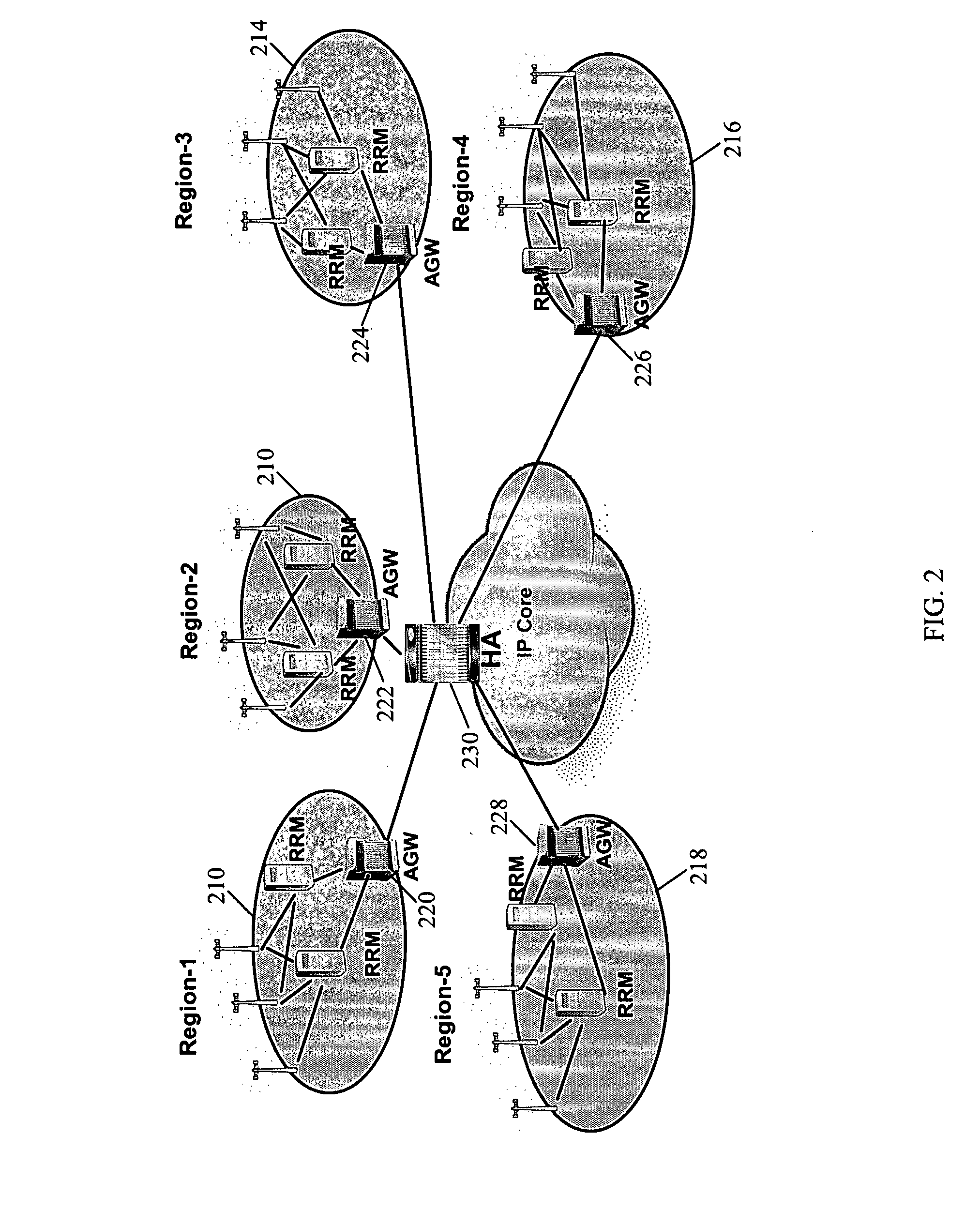System and method for traffic localization
a traffic localization and packet routing technology, applied in the field of system and method for providing packet routing on a network, can solve the problems of no knowledge of either the routing policies of the network or the network layout of the mobile node, the network has little or no say on whether route optimization is necessary or whether
- Summary
- Abstract
- Description
- Claims
- Application Information
AI Technical Summary
Benefits of technology
Problems solved by technology
Method used
Image
Examples
Embodiment Construction
[0029] Systems and methods for bridging selected packet traffic are provided in some embodiments. The bridging can be accomplished by determining a node is a common tunnel initiator (e.g., shared by at least two devices on the same call session) and then bypassing the tunnel terminator(s) of the call session. Bridging at a tunnel initiator reduces the amount of traffic that is backhauled. The bridge can also reduce packet latency and jitter by eliminating the backhaul network hops. The bridge may be implemented at various points and on various devices in a network depending on the network topology. The bridge can be implemented on a foreign agent, an access gateway (AWG), a packet data serving node (PDSN), a foreign agent (FA), a mobility anchor point (MAP), a controlling access point (CAP), a local mobility anchor (LMA), a media gateway (MGW), a media gateway control function (MGCF), a call session control function (CSCF), or a home agent (HA).
[0030] Tunnels are deployed in router...
PUM
 Login to View More
Login to View More Abstract
Description
Claims
Application Information
 Login to View More
Login to View More - R&D
- Intellectual Property
- Life Sciences
- Materials
- Tech Scout
- Unparalleled Data Quality
- Higher Quality Content
- 60% Fewer Hallucinations
Browse by: Latest US Patents, China's latest patents, Technical Efficacy Thesaurus, Application Domain, Technology Topic, Popular Technical Reports.
© 2025 PatSnap. All rights reserved.Legal|Privacy policy|Modern Slavery Act Transparency Statement|Sitemap|About US| Contact US: help@patsnap.com



